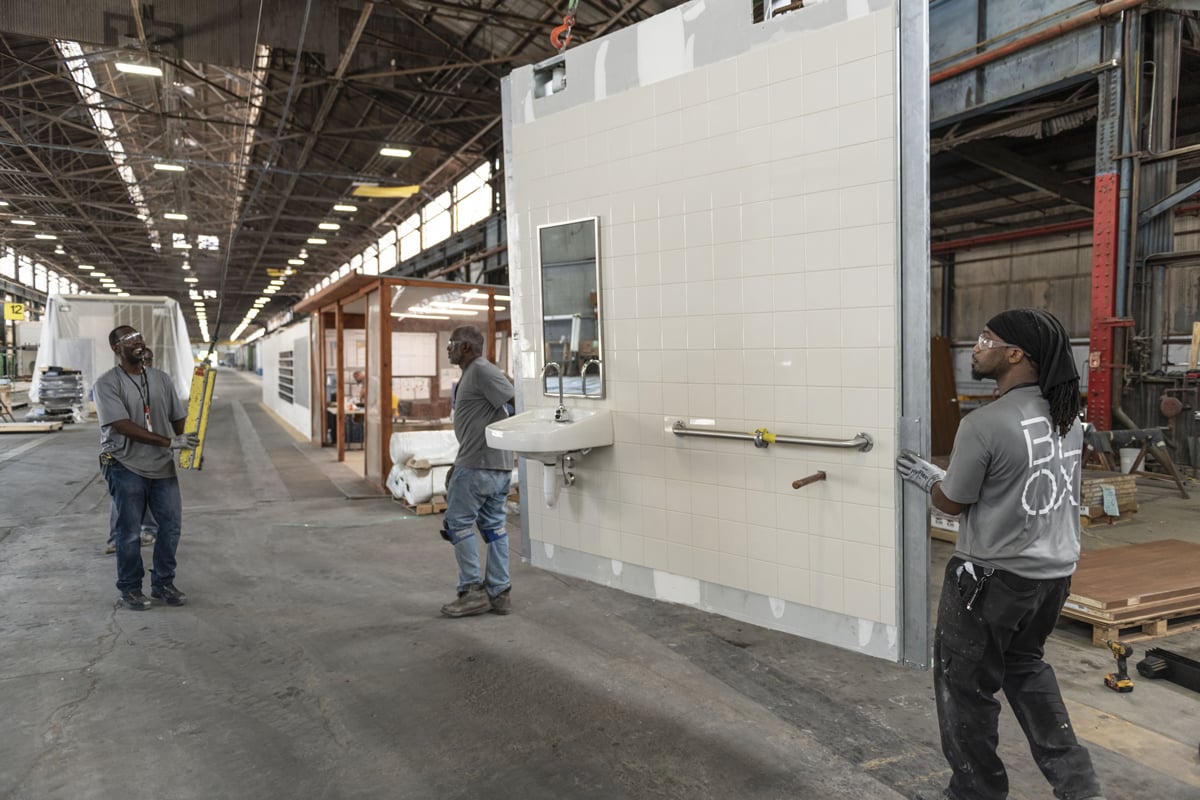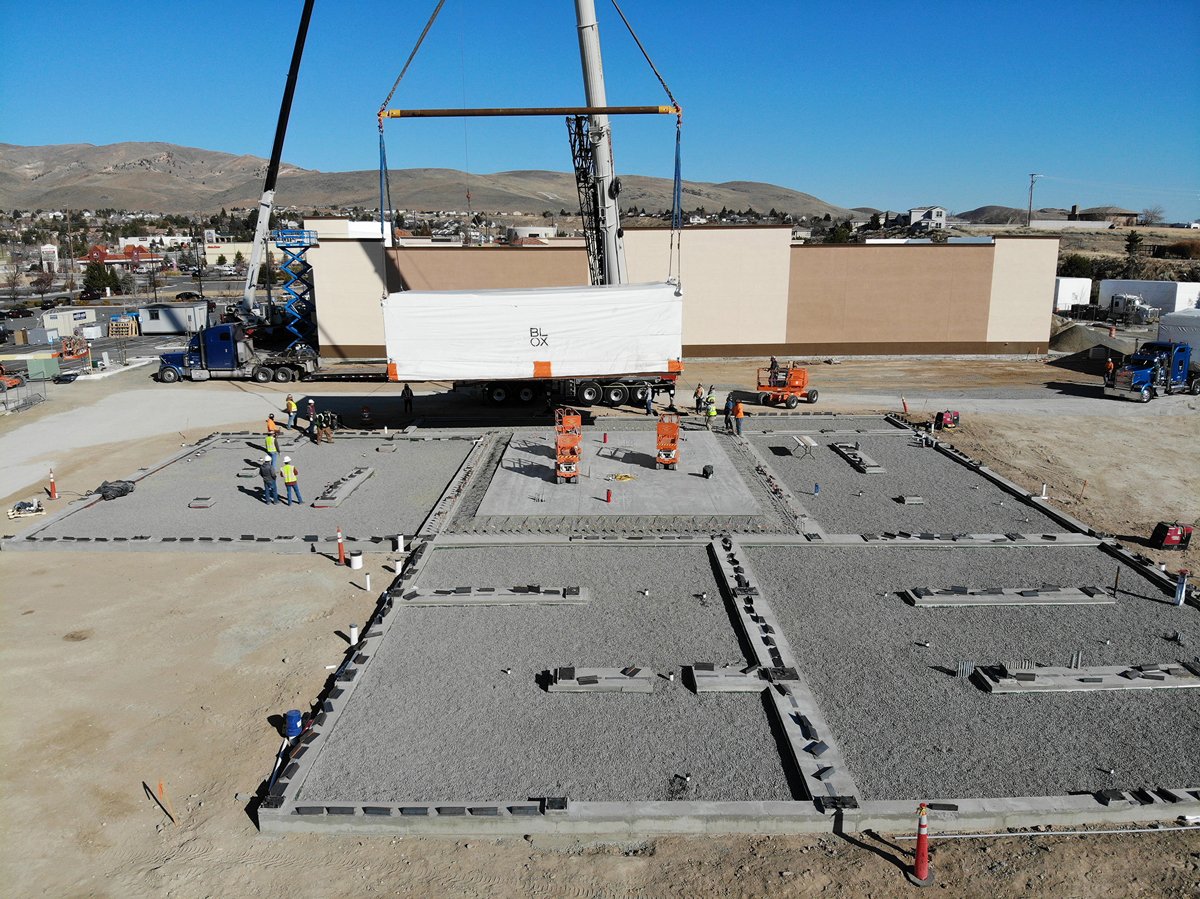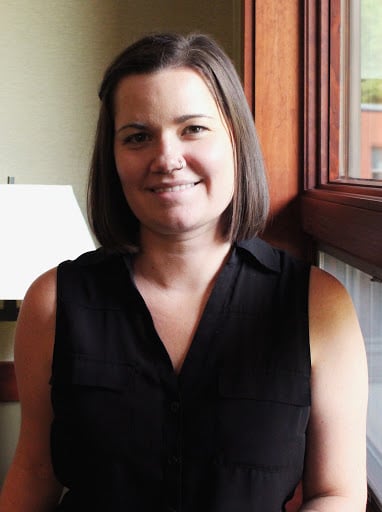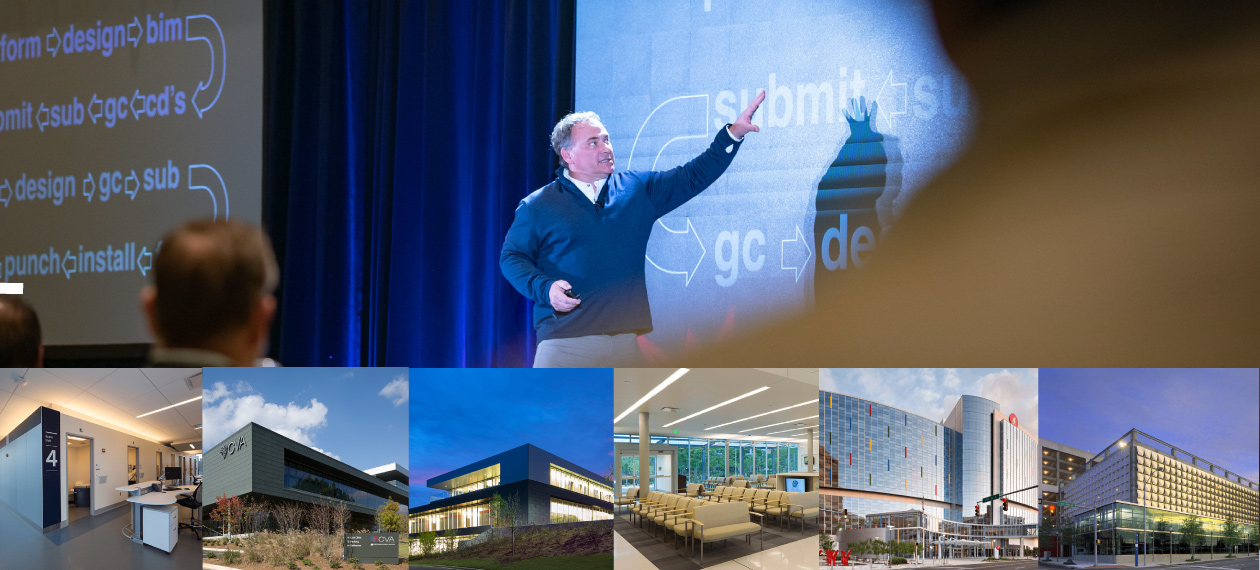Most healthcare construction is delivered project by project – every project is treated like a one-off process that starts at the same point and repeats the same steps, over and over. “It’s the groundhog effect” according to Chris Giattina, CEO of BLOX, which specializes in delivering healthcare buildings across the country as a product with its Design Manufacture Construct process.
Giattina detailed his shift in focus from project to product during a recent presentation at HealthSpaces, showcasing his desire to transform the way healthcare is delivered.
“Our clients have in common the desire to shift from a project-by-project mindset to a product mindset,” he said. “They want to make the shift so that they can improve quality, increase speed to market, and enhance the enterprise value of their company.”
Product vs. Project
The result of a building delivered as a product looks just like a building delivered as a project, but the processes are radically different. A project is built stick-by-stick where a product is “pulled” from an established platform – a series of standard interchangeable materials, digital processes, subassemblies, and large modules – that can be manufactured remotely and assembled on site to form a healthcare facility, quickly.
Traditionally, project creation follows a long, tedious process. Imagine a sequential journey that starts with an owner’s need and is then converted into a conceptual design, then into a BIM, then into construction documents, which are sent to the general contractors, which are subdivided and sent to many subcontractors, who then price and return to the general contractor, who then prepare shop drawings which need approval by the architect, which then can start construction. It’s a slow process that often takes years to complete.
"[This] platform leverages design resources, normalizes supply chains, and simplifies manufacturing processes."
“There is no leverage in the traditional project process. A huge healthcare system gets the same leverage on their multi-billion-dollar spend as a mom-and-pop community hospital building one facility every twenty years”.
“A product mindset creates leverage by using a platform. A platform leverages design resources, normalizes supply chains, and simplifies manufacturing processes,” Giattina said, “Because our designs are pulled from our Design Manufacture Construct platform, we start already knowing a lot about supply chain, regulatory demands, schedules, and costs. We can go directly from BIM to fabrication so that we open a building twice as fast as traditional construction”.
In Practice
The AEC world is a system designed to go project by project, Giattina said.
“We knew that we couldn't change the AEC, so we created an overlay within it called Design Manufacture Construct (DMC),” he said. “DMC teaches a legion of designers how to leverage manufacturing productivity so that we can simplify construction.”

BLOX - Bathroom modules
To do so, Giattina uses a technology called WEVR to connect design, manufacture, and construction in a digital ecosystem that forms the base of the DMC platform which converts raw materials into bespoke parts with digital fabrication.
“The bespoke parts are assembled into complex subassemblies, which are integrated into 2D panels that can be assembled into 3D modules, which can be nested in even larger modules that can be aggregated to create buildings," Giattina said. “DMC is a system that works like Russian nested dolls to deliver complex healthcare buildings as repeatable products.”
“We started the platform with a series of standard modules for Hospital Corporation of America – bathrooms, headwalls, exam rooms, surgery rooms. We’ve been developing them for the last eight years, and every year we roll out new and improved models” Giattina said. Standard Modules are the ante of the DMC process. Most of their clients begin their conversion by starting with a kit of standard modules and then grow into whole buildings.
Creating a Building
Putting it all together – the modules are delivered to the site on trucks and assembled into a building with cranes.
When BLOX started, they could deliver a few buildings a year to a handful of states. But the evolution has continued.

BLOX - Clinic construction
"Making complex things simple is the goal to have less work done in the field."
“Our clients want us to be faster and they need us to accommodate variation,” Giattina said. “Our team has worked to simplify the platform so that there is progressively less work required on the site. This means finding better ways to connect mechanical, electrical, and plumbing systems. In five years, we’ve gone from 5,000 field connections to 500 connections. We want to get it to 50, but that will take more work. Making complex things simple is the goal to have less work done in the field.”
When approached by a retail client that wanted to create health clinics, BLOX knew they were up to the task.
“The client’s goal was to make healthcare accessible and affordable at scale. We knew our team could get behind that vision,” Giattina said. “We took that brief and applied the lessons we’d learned, and created a healthcare clinic that includes vision clinics, audiology, dental operatories, radiography, labs, and primary exam rooms – a 7,500-square-foot world-class healthcare clinic that could be delivered in less than 100 days.”
But BLOX didn’t stop there. Instead, they kept continuously improving their processes. Giattina said that what started at 100 days dropped to 75 days, then to less than 60 days (from mobilization on site to owner turnover). BLOX’s goal is to deliver ten new clinics every 30 days.
“This is blazingly fast. It requires a normalized supply chain and highly standardized processes. It is possible to move at this speed and with this level of efficiency when you have a product mindset,” he said. “Without a product mindset, there’s not a chance.”

Posted by
Collaborate with your Peers!
HealthSpaces is a community for people that plan, design, build and operate spaces where healthcare is delivered.
June 7-9, 2026 | Braselton, GA
Learn More




-4.png)
-Dec-09-2025-05-48-44-4379-PM.png)
-4.png)
-1.png)
-2.png)

Comments